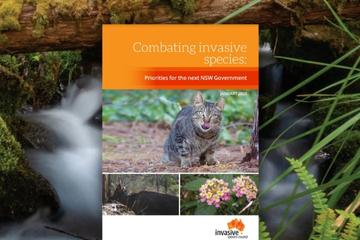On 26 June 2014 the Australian Senate set up an inquiry to look into how to prevent the arrival into Australia of new invasive species impacting on the environment.
The inquiry will look into recent biosecurity failures that have allowed the introduction of invasive species that hard the natural environment along with our state of preparedness for new environmental incursions.
The inquiry has been referred to the Senate standing committee: the Environment and Communications References Committee and is due to report by 3 December 2014.
The inquiry has been set up following calls from the Invasive Species Council for an inquiry following systematic breaches of our quarantine by environmentally damaging invasive species. It will be the first time in over ten years that Parliament has scrutinised failures of Australia’s quarantine in this area.
We are waiting to hear about dates for submissions and other information. Keep an eye on the Senate Committee webpage and our home page for information about how you can contribute.
Inquiry terms of reference
Inquiry into preventing invasive species harmful to the natural environment
The adequacy of arrangements to prevent the entry and establishment of invasive species likely to harm Australia’s natural environment, including:
- Recent biosecurity performance with respect to exotic organisms with potential to harm the natural environment detected since 2000 and resulting from accidental or illegal introductions from overseas:
- The extent of detected incursions, including numbers, locations and species, and their potential future environmental, social and economic impacts
- The likely pathways of these recently detected incursions and any weaknesses in biosecurity that have facilitated their entry and establishment,
- The extent of quarantine interceptions of exotic organisms with potential to harm the natural environment, including numbers, locations, species and potential impacts.
- Any reviews or analyses of detected incursions or interceptions relevant to the environment and any changes in biosecurity processes resulting from those reviews or analyses.
- Australia’s state of preparedness for new environmental incursions, including:
- The extent to which high priority risks for the environment have been identified in terms of both organisms and pathways, and accorded priority in relation to other biosecurity priorities.
- The process for determining priorities for import risk analyses (IRAs) and the process for prioritising the preparation of these analyses.
- The current approach to contingency planning for high priority environmental risks and the process by which they were developed.
- The adequacy of current protocols and surveillance and their implementation for high-priority environmental risks.
- Current system for responses to newly detected incursions, the timeliness and adequacy, and the role of ecological expertise.
- The extent to which compliance monitoring and enforcement activities are focused on high priority environmental risks.
- The adequacy of reporting on incursions, transparency in decision-making and engagement of the community.
- Institutional arrangements for environmental biosecurity and potential improvements
- Any other related matter
Committee referred: Senate Environment and Communications References Committee
Reporting date: 3 December 2014



